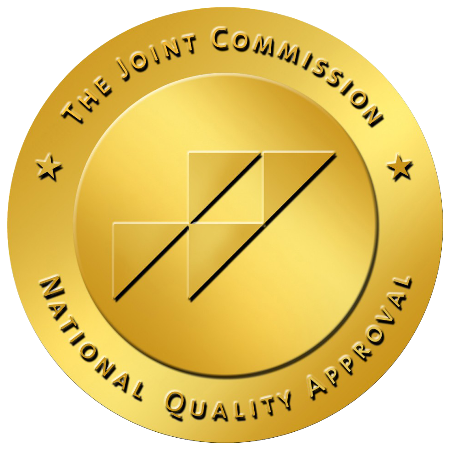12 Step Facilitation Therapy
The Power of Community
Addiction Is Not a Choice
Addiction can be isolating, and the company it keeps can make recovery less likely. Reaching out and connecting with others who are facing the same difficulties as you can feel relieving. Social interaction presents a sense of purpose and provides opportunities to manage negative ideas about yourself. Making new acquaintances can mean advice on coping with cravings, practical tips to avoid drinking or using, emotional support, or even a new perception that you are not alone in your struggle. The National Institute of Health (NIH) demonstrates studies confirming results from mutual support group membership surveys, verifying the clinical effectiveness of the 12 step approach. Northridge Addiction Treatment Center strongly believes in 12 step therapy and integrates its profound principles into treatment. We aim to inspire our residents to participate in 12 step meetings, surrounded by a network of individuals encouraging sobriety, evolving to a more optimistic mindset.
“If you want to change your behavior, find other people who are trying to make the same change.”
– Keith Humphreys, Ph.D., Stanford Medicine Psychologist
What Is 12 Step Facilitation Therapy?
Twelve-step facilitation therapy is a form of treatment that strives to encourage active participation and involvement in 12 step support groups. It is an involvement strategy intended to boost the likeliness of association with 12 step self-help gatherings, consequently promoting sobriety.
What Are the Principles Behind the 12 Steps?
Three core principles dominate 12 step facilitation therapy:
- Acceptance – the understanding that drug addiction is a chronic, developing disease over which one does not have control, that life has become unable to manage because of substance use, that willpower alone is not enough to conquer the problem, and that abstinence is the only choice
- Surrender – giving oneself to a higher power, accepting the companionship and support structure of other recovering addicted individuals, and partaking in the recovery activities in the 12 step program
- Active involvement – participating, joining, and sharing in 12 step meetings and affiliated activities
What Are the 12 Steps of Alcoholics Anonymous?
The twelve steps are guiding fundamentals in addiction treatment that overview how to manage alcohol and drug addiction, cravings, and compulsions.
Step1
We admitted we were powerless over alcohol – that our lives had become unmanageable.
Step2
Came to believe that a Power greater than ourselves could restore us to sanity.
Step3
Made a decision to turn our will and our lives over to the care of God as we understood Him.
Step4
Made a searching and fearless moral inventory of ourselves.
Step5
Admitted to God, to ourselves, and to another human being the exact nature of our wrongs.
Step6
Were entirely ready to have God remove all these defects of character.
Step7
Humbly asked Him to remove our shortcomings.
Step8
Made a list of all persons we had harmed, and became willing to make amends to them all.
Step9
Made direct amends to such people wherever possible, except when to do so would injure them or others.
Step10
Continued to take personal inventory and when we were wrong promptly admitted it.
Step11
Sought through prayer and meditation to improve our conscious contact with God as we understood Him, praying only for knowledge of His will for us and the power to carry that out.
Step12
Having had a spiritual awakening as the result of these steps, we tried to carry this message to alcoholics, and to practice these principles in all our affairs.
Where Did the 12 Steps Come From?
The 12 steps were written in 1938 by Bill Wilson and Dr. Bob Smith, the founders of Alcoholics Anonymous. They originally appeared in “The Big Book,” also known as the “bible” for Alcoholics Anonymous. The 12 steps functioned as principles for spiritual and character improvement. They still do to this day and have become the foundation of addiction treatment.
What Is the Point of the 12 Steps?
Twelve-step programs deliver readily available, easily accessible, no-cost resources for individuals suffering from addiction. The point is to change your perspective, to see your addiction as a symptom of a condition. Sobriety is maintained by utilizing the 12 step philosophy and sharing experiences with other individuals who have suffered through similar things.
How Do the 12 Steps Work?
Researchers have explored the contributing factors that increase abstinence and improved cognitive function behind 12 step facilitation therapy. A significant, effective element is the fellowship connected with the 12 step groups. Becoming a member of such groups prompts a shift in an individual’s social network, lowering the number of people who encourage drinking or drug use to a growing network of those who support sobriety. This progressive shift in social networks is associated with decreased exposure to drinking and substance-related activities and situations that influence cravings. It aids in creating social abstinence, self-value, and rewarding personal relationships. The groups’ encouraging connection with members in the fellowship provides structure and a sense of goal orientation, role models for working toward sobriety, participation in activities that are naturally rewarding that can replace substance use or substance-related activities, and the development of coping management.
Find Meaningful Recovery
Our caring and compassionate specialists are eager to help you comfortably navigate this journey to recovery. Our individualized treatment plan, programs, and therapies may be a perfect match for you or your loved one. Let us assist you in living the happy life you deserve. It starts with a phone call.




